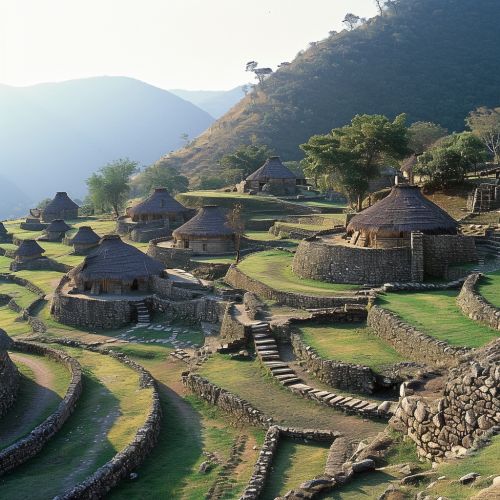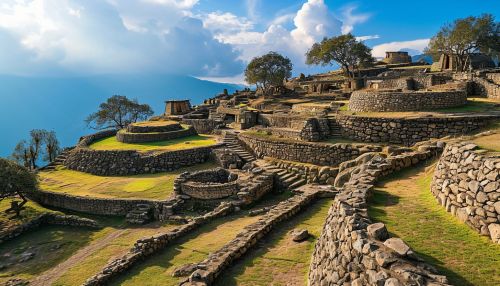Tairona
History
The Tairona were a pre-Columbian civilization that inhabited the Sierra Nevada de Santa Marta region in present-day Colombia. They were known for their intricate gold work, pottery, and unique architecture. The civilization flourished from around 200 CE until the Spanish conquest in the 16th century.


The Tairona were part of the Chibcha linguistic group, which also included the Muisca and other indigenous cultures in the Andean region. They were divided into two groups: the coastal Tairona, who relied on fishing and sea trading, and the mountainous Tairona, who were primarily farmers.
Society and Culture
Tairona society was hierarchical, with a ruling class of priests and nobles at the top. The common people, or "working class", were farmers, artisans, and traders. Tairona cities were often built on hilltops and were made up of circular houses built on stone terraces.
The Tairona were polytheistic, worshipping a variety of gods associated with nature. They believed in the afterlife and practiced ancestor worship. Their religious practices included the use of hallucinogenic substances, which were consumed during rituals and ceremonies.
Art and Architecture
The Tairona are renowned for their intricate gold work and pottery. They crafted a variety of objects, including figurines, jewelry, and ceremonial items. Their pottery was often decorated with geometric designs and images of animals and humans.
Tairona architecture is characterized by its use of stone terraces and circular houses. The houses were made of stone and wood, with thatched roofs. They also built roads, bridges, and stairways, demonstrating a high level of engineering skill.
Decline and Legacy
The arrival of the Spanish in the 16th century led to the decline of the Tairona civilization. The Spanish sought to convert the indigenous people to Christianity and to exploit them for labor. Many Tairona resisted, leading to conflicts and eventual decline of their population.
Today, the descendants of the Tairona, known as the Kogi, continue to live in the Sierra Nevada de Santa Marta. They strive to maintain their traditional way of life and to protect their ancestral lands from modern threats.
